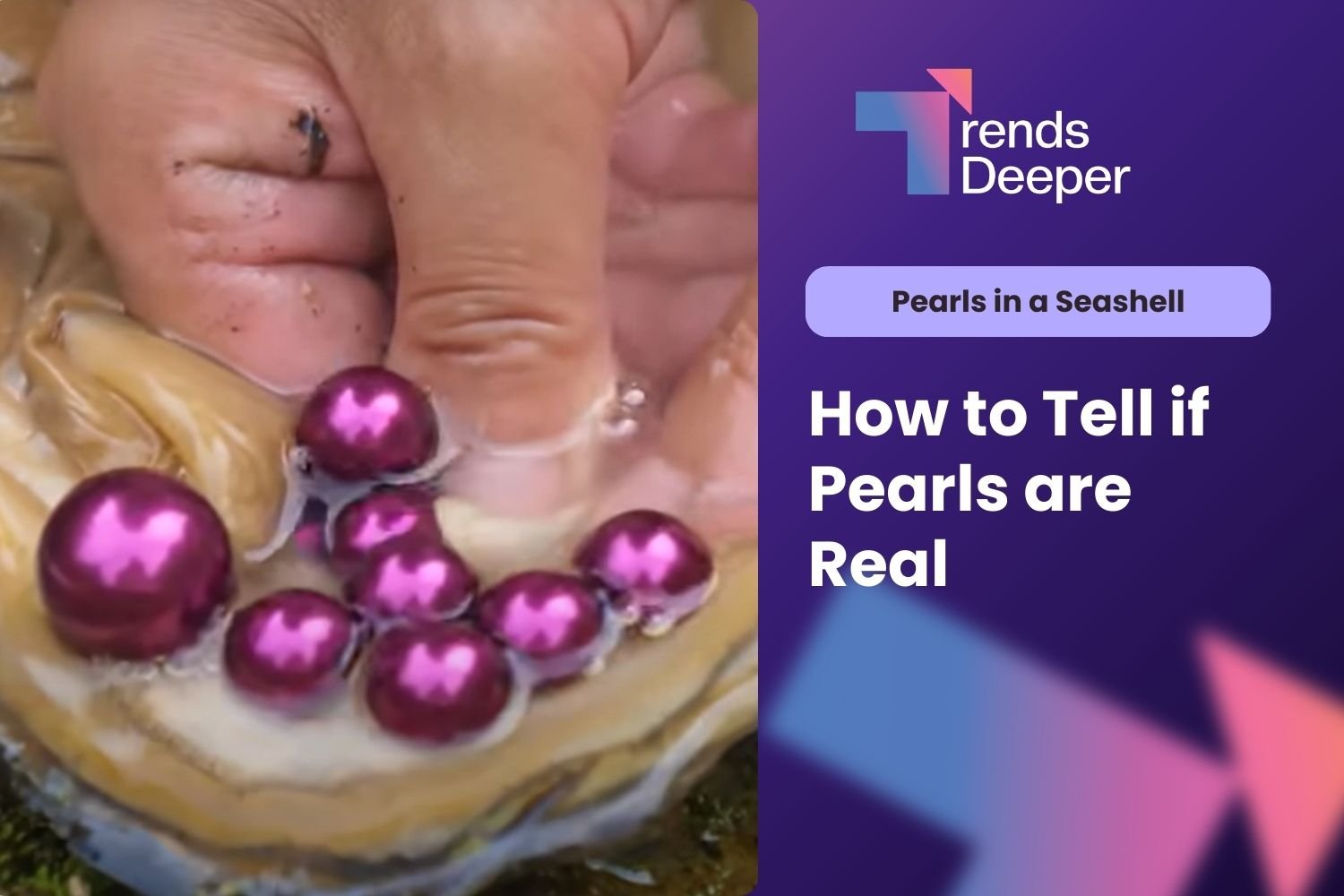Pearls have long been prized for their timeless beauty and elegance. However, with so many imitation pearls on the market, it can be challenging to determine if the pearls you own or are looking to purchase are genuine. In this article, we’ll break down five simple and effective ways to help you identify whether your pearls are real or fake. Whether you’re a seasoned jewelry buyer or a curious beginner, these tips will help you make an informed decision.
1. The Tooth Test: A Quick and Easy Method
One of the most popular and straightforward ways to determine whether a pearl is real or fake is by using the tooth test. This method involves lightly rubbing the pearl against the biting edge of your tooth.
- How it works: Real pearls are formed in layers of nacre, which give them a gritty texture when rubbed against your teeth. Fake pearls, typically made of glass or plastic, will feel smooth.
- Instructions: Gently rub the pearl along your tooth. If it feels rough or slightly sandy, it’s likely real. If it glides smoothly, it could be fake.

This test provides a quick initial assessment, but it’s not always definitive, as some high-quality fakes can mimic the texture of real pearls.
2. The Luster Test: The Shine Reveals the Truth
The luster test focuses on the way a pearl reflects light, which can indicate its authenticity. Real pearls have a deep, rich glow that seems to come from within, while fake pearls often have a more superficial, plastic-like shine.
- How it works: Real pearls reflect light in a unique way due to their layers of nacre. The light bounces off the layers, creating depth and a soft iridescence.
- Instructions: Hold the pearl up to natural light. Does it have a glowing, almost metallic luster that seems to emanate from within? If so, it’s likely real. Fake pearls usually have a more even, flat surface without the same depth.
3. The Weight Test: Heft Can Help Identify Real Pearls
Another helpful way to differentiate between real and fake pearls is by checking their weight. Real pearls are typically heavier than fake ones due to their natural density.
- How it works: Genuine pearls have a substantial weight because of the calcium carbonate they’re made of. Fake pearls, often made of lightweight plastic, will feel noticeably lighter.
- Instructions: Hold the pearl in your hand and assess its weight. A real pearl will feel heavier than a fake one of the same size.
However, be cautious, as some imitation pearls made of glass may also have a heavier weight, similar to real pearls.
4. The Vinegar Test: Chemical Reaction to Prove Authenticity
The vinegar test is a more scientific method to determine if pearls are real. This test is based on the chemical reaction between calcium carbonate, the primary material in real pearls, and acetic acid found in vinegar.
- How it works: When real pearls come into contact with vinegar, they will fizz or erode slightly due to the acid breaking down the calcium carbonate. Fake pearls, made from materials like plastic or glass, won’t react.
- Instructions: Place a drop of vinegar on the pearl or submerge it in vinegar for a short time. If it fizzes or shows signs of erosion, it’s likely real. However, use caution with this test, as it can damage the pearl’s surface.
This method is reliable but should be used sparingly to avoid permanently damaging real pearls.
5. The Surface and Imperfection Test: Nature’s Flaws
Real pearls, especially natural and cultured pearls, are rarely perfect. The surface test involves closely inspecting the pearl for imperfections.
- How it works: Real pearls form in mollusks over time, resulting in slight imperfections like ridges, bumps, or pits. Fake pearls, often machine-made, are usually flawless and identical in appearance.
- Instructions: Use a magnifying glass to inspect the pearl’s surface. Look for small irregularities and imperfections. If the pearl appears too smooth and perfect, it may be fake.
These natural imperfections are a hallmark of genuine pearls and are part of their unique charm.


